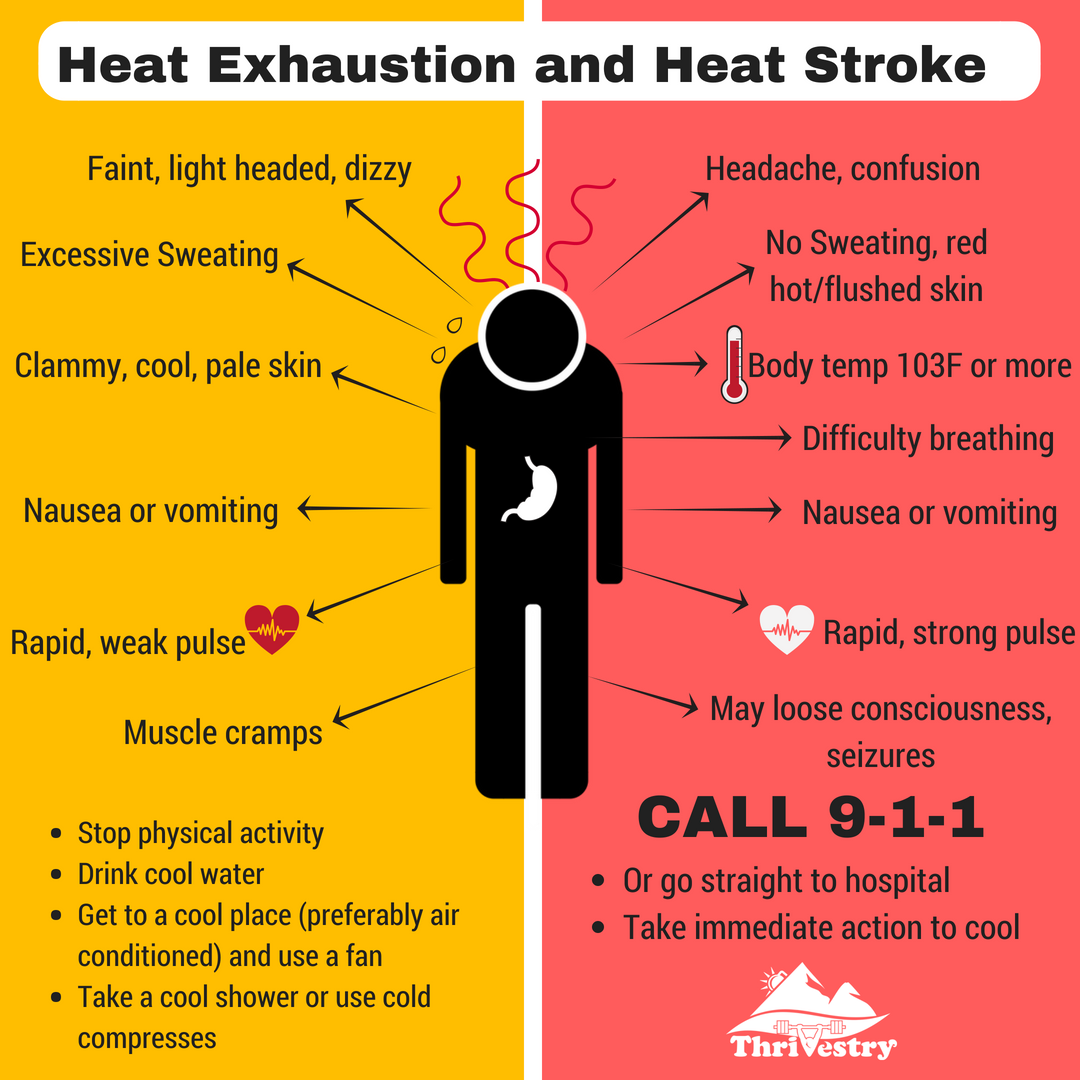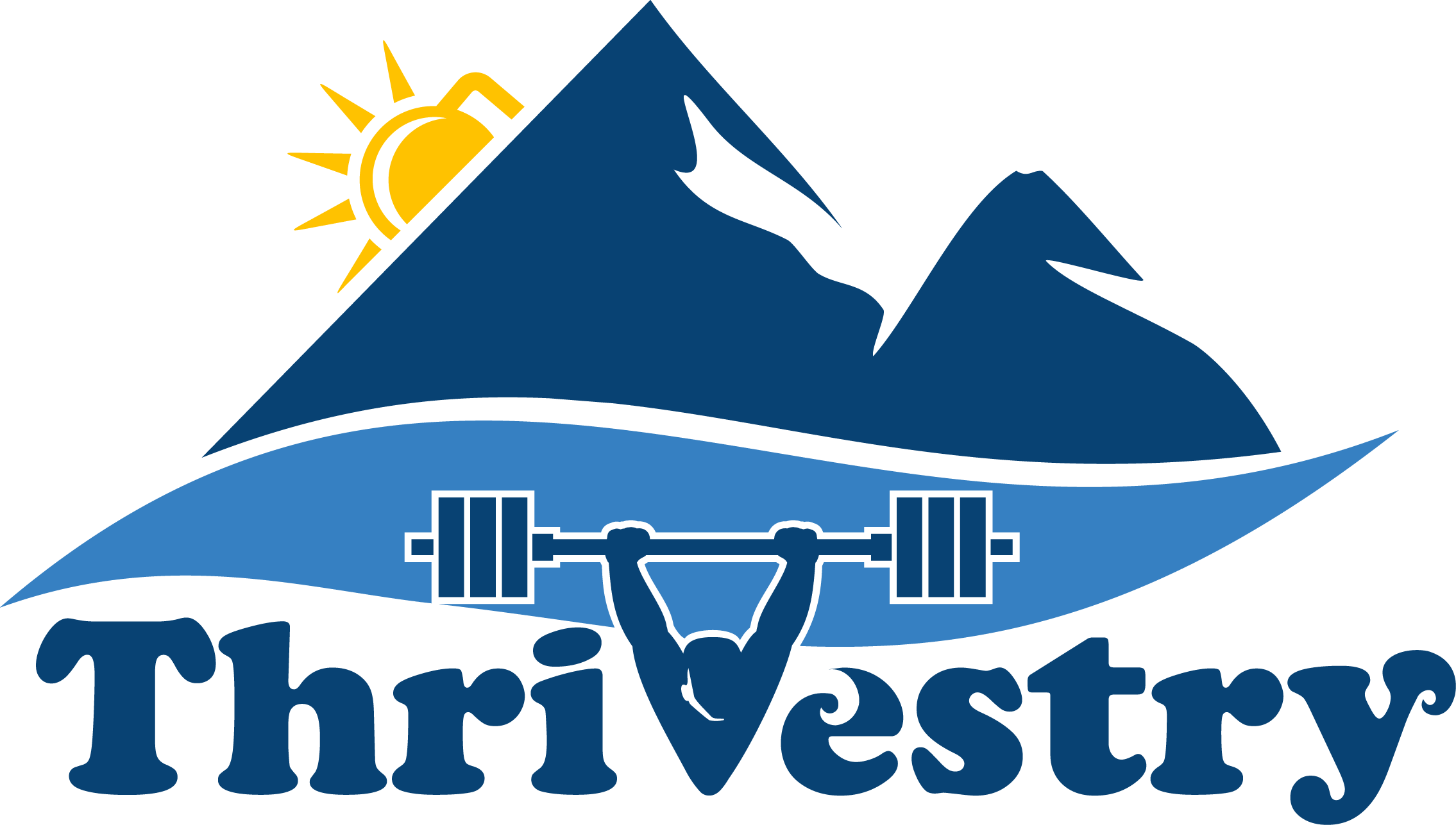It Is Good to Train in the Heat... But Not If You Die or Have Organ Failure
When it is hot outside, and we are doing an activity that generates a lot of excess body heat, we are at risk of overheating. This is especially true when we are paying more attention to what round we are on, our form, and trying not to get passed by the gal/guy next to us!

Chances are, you’ve probably been somewhere close (if not completely) in heat exhaustion before on a hot day when doing a workout, but that doesn’t mean we shouldn’t know the signs so we can avoid it in the future.
Side Note: It is no coincidence that many of the symptoms of heat exhaustion look like the exact same things you experience after a particularly hard workout. These workouts make you HOT! There is evidence that making yourself hot (through training or even sauna use) is one of the stimuli that causes your body to adapt in positive ways like lower body fat, better heart health, better cognitive function, etc.!
Tips for Performance When Training in the Heat (and avoiding heat exhaustion)
- Stay hydrated! The human body is a hydraulic machine. Not only do we use our blood to move fuel and oxygen around, we use it transfer heat to our skin so it can be radiated to the atmosphere. As we sweat, we lose some of the fluid that allows our circulatory system to operate properly because we cannot transport nutrients/oxygen AND we can’t shed heat as effectively. If your urine is darker than light, transparent, yellow, you probably aren’t getting enough water!
- Make sure you are getting enough electrolytes. Electrolyte drinks are great, but make sure you are getting enough sodium. It is common for people who are avoiding processed foods to not get enough salt, especially if/when they are training and sweating a lot. The number one mineral that is lost through sweat is salt. Make sure you are getting enough of it!
- Stay out of the sun and/or stay covered up if you can’t. The sun adds a significant amount of heat to the body. If you can stay in the shade/indoors you will be much better off. If you must be in direct sunlight, wear lighter color clothes and a hat. Work on your tan after the workout is over.
- Keep your ego in check. Take stock of yourself and those around you. Is your pulse higher than normal? Are you sweating the normal amount? During your short breaks, are you recovering normally? If you start having the symptoms of heat exhaustion, you can first try taking an extended rest in a cool area. If you still don’t recover, it is time to ‘call it’ for the day and cool off. Make sure you are paying attention to others around you to see if they are going into ‘danger’ territory.
- Give yourself time to ‘acclimatize’. If you haven’t trained in a while, or you haven’t trained in the heat lately, be extra careful the first 3-4 weeks. Extensive testing by the Military has found that it usually takes about 21 days for the body to ‘get used’ to the heat (by storing extra water, initiating sweating faster, etc.)
- Pay attention to ‘gear’. The body sheds heat through the hands, feet, and ears through special capillaries. If you are wearing gloves or particularly hot shoes, you may overheat faster. The same thing goes for weight vests. Be extra vigilant when using a vest to train in the heat!
- Set up near a fan or somewhere with a breeze. Fans will help evaporate the sweat off of your body creating a cooling effect. Just make sure you are well hydrated so you are sweating enough.
Heat Stroke is No Joke
Take heed. Heat stroke can cause damage to internal organs, your brain, and even lead to death.
If people are starting to get heat exhaustion around you, take measures to slow them down and cool them off. If they start showing symptoms of heat stroke, stop everything immediately and get medical attention.
There is nothing healthy about training so hard that you give yourself brain damage or die!
Thrive on.
-jj

0 comments
Leave a comment